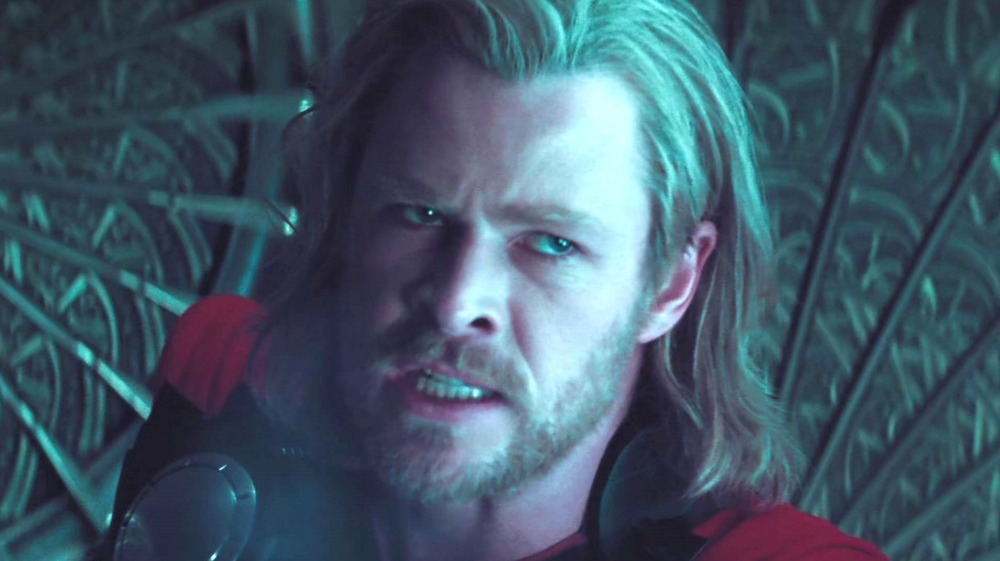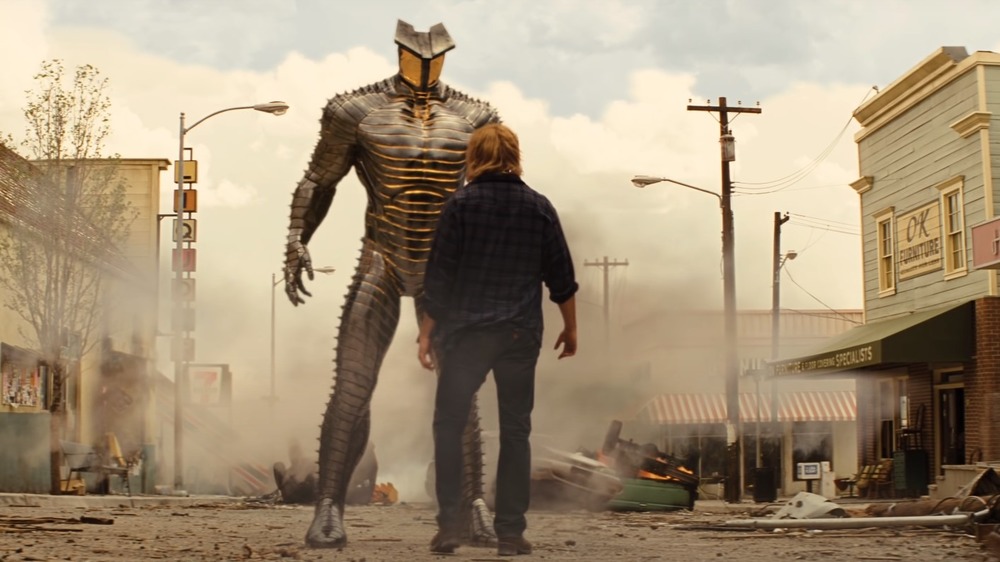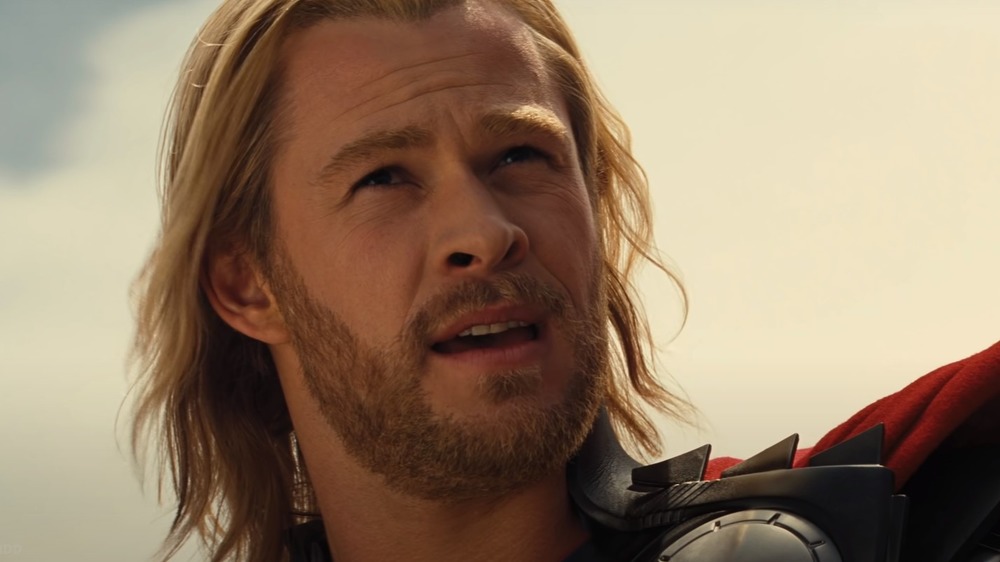The Ending Of Thor Explained
Thor really should have been the unscalable obstacle to the MCU's success. Up to that point, the franchise had given audiences three movies: two stories about a guy who made his own metal clothes, and one about a scientist who changed from Edward Norton into a green monster when he got angry, and from Edward Norton into Mark Ruffalo when he got upset about contract disputes.
So it was sort of a big swing when Marvel Studios made the jump from Iron Man and The Incredible Hulk to a golden alien world populated by literal Norse gods. Still, the Avengers weren't going to assemble themselves, and the heir apparent of the Asgardian throne had some growing up to do, of the variety best explored in a cinematic by-the-numbers redemption story.
Thor, the god of thunder and son of Odin, is shown to be as impetuous as his eyebrows are bleached. Acting against the orders of his old man, he and his besties, along with his suspiciously adopted-looking brother Loki, go out on a Frost Giant smashing safari. The result is the end of a tenuous truce between the Frost Giants and Asgardians, two civilizations with a long history of unpleasantness. Odin, like so many well-to-do fathers before him, cuts his brat of a kid out of the will, stripping Thor of his powers and sending him to the darkest corner of existence: the American Southwest.
Importantly, Odin also sends Thor's favorite thing to hit things with: Mjolnir, the thunder god's war hammer. He enchants Mjolnir, stating that only someone worthy of its power can lift it. Loki, meanwhile, starts stretching his next-in-line-for-the-throne muscles, unaware that he's overdue for a dramatic character twist.
Great power, great responsibility, and Thor's willingness to die for New Mexico
In New Mexico, Thor's immovable hammer becomes a point of fascination with the locals, soon drawing the attention of the good folks at S.H.I.E.L.D. Thor, unable to lift the hammer, decides that he'd be better off living in exile, a proposition that probably sounds a lot better now that Jane Foster, an astrophysicist who looks a lot like Natalie Portman, is making dreamy eyes at him on the regular. Along with her research partners Erik Selvig and Darcy Lewis, Thor gets down to the business of hard chilling.
Meanwhile, back in Asgard, Loki finds out that he's actually a Frost Giant, adopted as a baby and re-skinned to look like a standard, unassuming god of mischief. Odin, understandably sleepy after centuries of science fiction fantasy adventures, enters the Odinsleep, a mystical nap through which Thor storylines are traditionally kept moving. Loki seizes the throne and gets set to destroy the Frost Giants using Asgard's fast travel system, the Bifrost Bridge, in the hopes of securing his adopted father's approval. Or, you know, maybe he does it because he's sort of a jerk.
Thor's best friends make a surprise trip to Earth, hoping to secure the thunder god's help to stop Loki. Loki, meanwhile, takes this personally and sends a living weapon known as the Destroyer to kill his dissenters. The Destroyer knocks our heroes around for a while until Thor, still notably de-powered and susceptible to getting shot with face lasers, puts himself in the line of fire, sacrificing himself to save others.
Thor wins, Loki falls, Odin's alarm goes off
It's a lesson that the MCU would hammer home repeatedly in the next few years, including twice in Captain America: The First Avenger and three or four times per movie after that: the best thing that a leader can do is jump on top of a grenade. Sometimes literally.
Through Thor's act of self sacrificial bravery, he proves himself worthy of the title of Lightning Hammer Guy. Mjolnir flies to his aid, he straight smashes the Destroyer, and, pausing for a moment to mack on Jane Foster, jets off to Asgard via the Bifrost. He destroys the bridge to stop his scheming brother, who throws himself into the resulting wormhole despite Odin's timely awakening and very fatherly offer to save him from death in the inky void of space.
In the end, Thor admits that he's not really king material at the moment and takes off on an unseen series of adventures. Jane, Erik, and Darcy get to work trying to find a way to get to Asgard. Post-credits, Nick Fury tasks Selvig with studying the Cosmic Cube, neither of them wise to the fact that they're being manipulated by an unseen Loki. S.H.I.E.L.D., meanwhile, adapts the Destroyer's remains into a distinctive heavy weapon, which Coulson later uses as the punctuation mark on the end of his MCU life.


